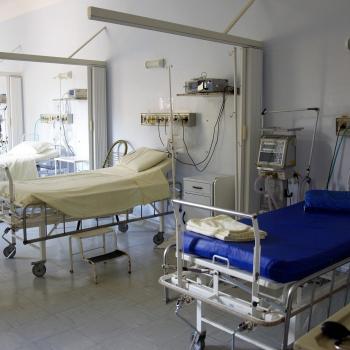In Tuesdays’ congressional hearings, Rep. Cynthia Lummis asked Planned Parenthood Federation of America President Cecile Richards the following question:
If you look at the 2013 statistics that you report, abortions, from revenue, would have been over 86% of your non-government (health services) revenue. How do you explain this massive disparity between the amount of revenue you collect from abortion and the fact that you only report 3% of your services being abortion?”
Richards neither confirmed nor denied Lummis’ 86% figure. Instead, she responded by pointing out, again, that federal funds do not go toward abortion funding and correctly noting that abortion procedures are more expensive than some of the other procedures provided by Planned Parenthood.
Nevertheless, opponents of Planned Parenthood are now running headlines like this:
Cecile Richards: Abortion is 86% of Planned Parenthood’s revenue
This is incredibly dishonest, both because the 86% figure came from Lummis and was never confirmed by Richards and because it is patently and obviously false that abortion makes up 86% of Planned Parenthood’s revenue. In fact, the headline distorts what Lummis herself said—she made it clear that the 86% figure she stated had to do with non-government (health services) revenue, but the headlines don’t make that clear in the least, and in fact suggest the opposite—that 86% of Planned Parenthood’s overall revenue comes from abortions.
Where did Lummis get her number, is it accurate, and what does it tell us about Planned Parenthood’s funding as a whole? I have answers to all of these questions! First, let’s take a look at the revenue reported in Planned Parenthood’s annual report from 2013-2014, which Lummis references:
As you can see, only 23% of Planned Parenthood’s revenue comes from non-government health services. This is what makes the headlines declaring that “86% of Planned Parenthood’s revenue comes from abortion” so ludicrous. That is a literal impossibility. So where did Lummis come up with that number? Writers at the Independent Journal asked her staff and received an answer. It turns out that Lummis took this same annual report and focused in on the 23% of Planned Parenthood’s revenue that comes from non-government health services. Multiplied by the total revenue for the year, that amounted to $305.3 million.
Lummis’s office also took Planned Parenthood’s estimated price for a generic abortion pill at $800 per pill (which is cheaper than the estimated price of a generic first trimester in-clinic abortion). Given that Planned Parenthood reports providing 327,653 abortions in 2013-2014 — and assuming $800 per abortion — that yields $262 million in revenue, or nearly 86% of the total non-government health services revenue.
In other words, the 86% figure is based on Lummis estimating what Planned Parenthood receives per abortion and then multiplying this number by the number of abortions they provide. But as I’m about to show you, Lummis did this estimation very very badly, and in fact with less effort than I have put into this single blog post.
Lummis essentially made up the amount of money Planned Parenthood makes per abortion. IJ claims that the $800 price was Planned Parenthood’s “estimated price” for a pill abortion, but in fact it’s the top price, not the estimated price. Of course, IJ notes that Planned Parenthood estimated price for a first trimester in-clinic abortion is higher, but this led me to wonder why Lummis didn’t use that figure, especially given that the vast majority of first trimester abortions are surgical abortions, not medication abortions.
So I ran the top number Planned Parenthood offers for surgical abortions—$1500—and found that using that figure, Planned Parenthood made $491.5 million in revenue from abortions. Except that this is impossible, because Planned Parenthood only made $305.3 million in revenue from non-government health services that year total. That alone should have been enough to clue Lummis into the reality that you can’t take Planned Parenthood’s top prices for abortions from their website and assume that those are actually what they made.
I spent time volunteering at my local Planned Parenthood, and I know for a fact that the price my local clinic charges for both types of abortions are far, far lower than the top price listed on the Planned Parenthood website. Curious, I did some digging, and you know what I learned? According to the Guttmacher Institute:
In 2011-2012, the average amount paid for a nonhospital abortion with local anesthesia at 10 weeks’ gestation was $480. The average amount paid for an early medication abortion before 10 weeks was $504.
Now sure, but what about inflation? After all, these abortion price numbers are from 2011-2012 and the year we’re looking at is 2013-2014. I couldn’t find more recent stats right off, but I did find that, according to the Guttmacher Institute, the average price of abortions in 2009 was $451 for a surgical abortion and $483 for a medication abortion. If the average price of a surgical abortion was $451 in 2009 and $480 in 2011, we can estimate that it would be $509 in 2013, and if the average price of a medication abortion was $483 in 2009 and $504 in 2011, we can estimate that it would be $525 in 2013.
In 2011, 23% of nonhospital abortions were medication abortions. This number was up from 17% in 2008, so because we’re looking at 2013-2014, let’s bump the number up slightly to 25%. This would mean there were roughly 81,913 medication abortions and roughly 245,740 surgical abortions in 2013-2014. Multiplying these numbers by the estimated average price for a nonhospital abortion that year ($525 and $509), we get $43 million for medication abortions and $125.1 million for surgical abortions, or a total of $168.1 million dollars in revenue from abortions in 2013-2014. That is a total of 55% of Planned Parenthood’s revenue for nongovernment health services.
Based on the number and type of abortions Planned Parenthood performed during the 2013-2014 fiscal year and the estimated average amount paid for a non hospital abortion during that period, an estimated 55% of Planned Parenthood’s nongovernment health services revenue came from abortions. These numbers are still estimations and will remain estimations unless Planned Parenthood releases an itemized breakdown of how much revenue each procedure generates for the organization. However, this number is nevertheless based on numbers that are far more sound figures than was Lummis’ number.
Of course, 55% still sounds a bit high, doesn’t it? There’s a reason for that.
Looking at the percentage of nongovernment health services revenue that comes from abortion in isolation from the rest of Planned Parenthood’s revenue is highly misleading. This is largely because of the way government v. nongovernment funding is broken down. The government funds Planned Parenthood receives are money paid to Planned Parenthood for services just like the nongovernmental health services revenue, it’s just that those funds only cover certain kinds of services. In addition, the money received from private donors helps Planned Parenthood offer services as well by reducing the cost of services to the individual patient. Looking only at nongovernmental health services revenue eliminates both funds that help keep other services’ prices low (the private donations) and funds that of necessity won’t include abortion but are funds received for heath services provided (the government funds).
Out of all of the services it provides—pap smears, STD testing, birth control services, and abortion—Planned Parenthood receives an estimated 15% of its revenue from abortion.
Next time someone tells you that abortion is 86% of its revenue, tell them it’s actually around 15%. I’m getting very, very tired of all the misinformation.















